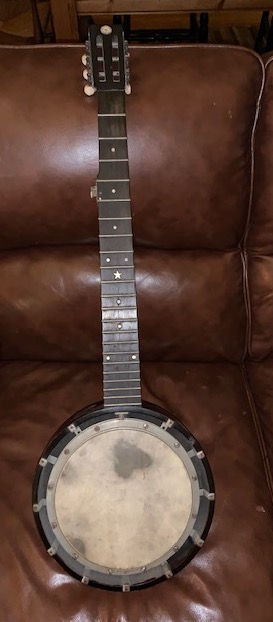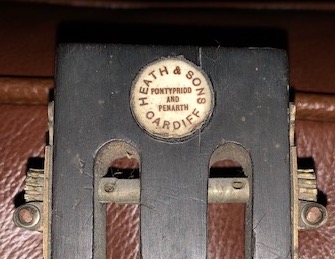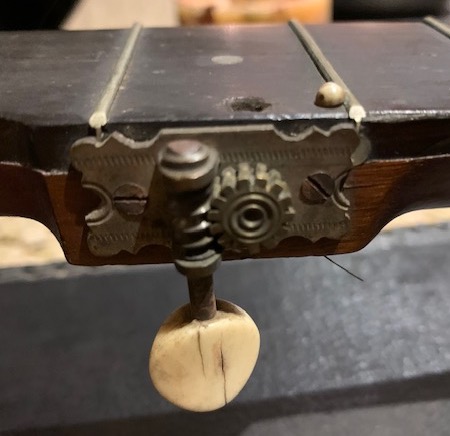The 6 and 7 string antique zither musical instrument is sometimes called the “English banjo” compared to its 5 string American cousin. In 1846, William Temlett designed a 6 string banjo with a short “thumb” string on the neck in his Brooklyn, NY, shop. Temlett patented a 7-stringer in 1869 and named it his “zither-banjo” while claiming to be its inventor. The successful American concert banjoist Alfred D. Cammeyer relocated to London in 1888 and popularized the zither banjo to eager British audiences. In 1893, the Essex & Cammeyer partnership began marketing their brand of zither banjos which were manufactured by the Temlett, Weaver, Wilhurst, and Windsor factories.

The BRC mailbox recently received a query from a musician in the US who just bought what he believed was a 7 string banjo from an acquaintance who had purchased the instrument years previously while living briefly in India. The mysterious instrument proved to be the English permutation of a 5 string American banjo. The peg head documented that the instrument was marketed by Robert J. Heath & Sons who were musical instrument sellers in Wales, UK. This family firm was listed in local trade directories from 1884 to 1967. Its shops were located at 51 Queen St. in Cardiff and at 70 Taff St. in Pontypridd. The multi-generational enterprise was affiliated with a musical instrument factory in London.

Boston banjo scholar Jim Bollman graciously examined several photos of the instrument and reported: Hi Barry- This is a British zither banjo, usually strung with wire and gut (nylon). There’s not a lot of interest in these in the US, probably worth a couple hundred bucks to a motivated buyer (who will be hard to find). They almost always have a closed back and a tunneled fifth string. Cheaper models used guitar tuners to save a few quid (one tuner left unused) – these were usually played as a regular five string. Best, Jim

Somewhere on its journey, this unique zither banjo had a geared guitar tuning peg installed on the neck at the fifth fret to fine-tune the 5th string. Adjacent to it on the fretboard is the original drilled entrance hole for the 5th string to traverse a tunnel inside the neck up to the slotted head-neck junction where the string would exit via another drill hole and be wrapped around a nearby tuning peg spool. The guitar style peg head configuration left one tuning peg unused in the conversion to a 5 string instrument.
With a little TLC repair work, this English gem could be restored to a playable zither treasure. For further information on the 19th century evolution of Anglo-American banjo design and the trans Atlantic travels of another not dissimilar antique instrument, please enter “journey” in the website search engine. For an historical note detailing the 17th century arrival of the African banjo in the Western Hemisphere, please enter “banza” in the website search engine.
From the BRC: Many thanks to the musician who kindly shared his fascinating antique banjo with our readership.

No Comments